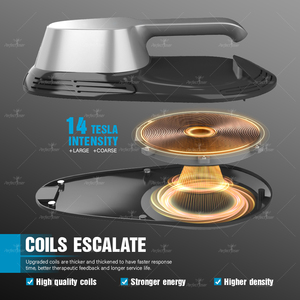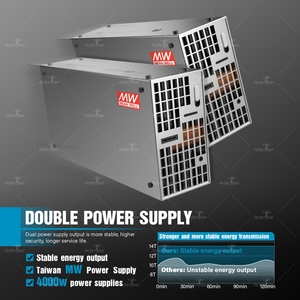
All categories
Featured selections
Trade Assurance
Buyer Central
Help Center
Get the app
Become a supplier

(25951 products available)














































Physiotherapy devices are available in different formats for various body areas and clinical concerns. Physiotherapy equipment suppliers provide tools to help with rehabilitation, pain relief, and improving mobility.
Some of the most popular types of physiotherapy machines include, but are not limited to, the following:
Ultrasound machines
High-frequency sound waves penetrate deep tissues with ultrasound physiotherapy machines. It makes them ideal for treating deep tissue injuries. The sound waves stimulate blood flow, lessen swelling and pain, and hasten the healing process. Ultrasound units help therapists control treatments in dense muscle areas, joints, and other hard-to-reach places. They are useful for treating tendonitis, bursitis, and scar reduction. Many handheld devices have portable designs for practical, on-the-go treatment.
TENS machines
TENS machines, or transcutaneous electrical nerve stimulators, offer drug-free pain relief. In areas of discomfort, these gadgets send mild electrical pulses through the skin, blocking pain signals from reaching the brain. TENS units are useful for therapists and patients who need to manage chronic pain in locations like the back, neck, or joints. Adjustable settings let users customize their experience. Many TENS machines are small enough for users to carry around, allowing for simple, portable pain control.
Interferential current therapy machines
Interferential current therapy machines provide deep tissue stimulation for swelling, pain, and healing. Two electrical currents cross over the skin to penetrate deeper tissue while being gentle on the surface. It is helpful for inflammatory conditions, joint and muscular pain, and even post-surgical recovery. Physiotherapists appreciate the device's ability to reach deeper tissues more effectively than TENS while avoiding discomfort. The gadget effectively stimulates nerves and muscle tissues for holistic pain management.
Electrical stimulation machines
Therapeutic electrical pulses are delivered to injured or weak muscles using electric muscle stimulators. This aids in muscular retraining and reduces atrophy. Paralysis, post-operative recovery, and general strengthening are among the medical concerns these devices address. Electric stimulation machines are helpful in rehabilitation programs to improve function in difficult areas. The equipment is sensible and effective for managing muscular dysfunction.
Galvanic physiotherapy machines
Galvanic physiotherapy machines are useful in complementary therapy through electric currents. While one current is constant and low for iontophoresis, another is pulsating and variable for muscle stimulation. It aids drug absorption or tissue stimulation through penetration. Muscular issues and arthritis can both benefit from integrated dual current activity. Galvanic machines are appropriate for rehabilitation and enhancing circulation in patients with limited mobility.
The main tasks of physiotherapy machines are:
Important parts of physiotherapy machines include:
Good design is for machines' efficacy, usability, and safety. Key design aspects are:
Physiotherapy devices are adaptable and helpful in many clinical situations. Each tool serves a particular function to aid in patient recovery.
Chronic pain management
Machines like TENS and interferential current devices are invaluable in easing chronic pain in any body part. TENS is useful in lowering pain levels in patients with joint disorders, back discomfort, or neuropathy by sending mild electrical impulses through the skin.
Post-operative rehabilitation
After surgery, it is common for patients to have restricted mobility and weakened muscles. Electric stimulation and ultrasound machines can help these patients regain their range of motion and strength while preventing muscle atrophy. In particular, NMES machines support muscle contractions while helping patients recover from major surgery more efficiently and effectively.
Sports injury recovery
Ultra sound and deep heat machines are standard recovery tools for athletes with damage to their muscles, tendons, or ligaments. The greatest devices for treating deep tissue injuries, enhancing blood flow, and reducing swelling are the ultrasound and interferential current machines. They enable athletes to heal quickly and re-enter the action safely by easing pain and increasing mobility.
Neurological rehabilitation
Patients recovering from strokes or neurological illnesses experience a loss of muscular control. To assist with muscle re-education and repair, electric stimulators and ultrasound therapy machines can be applied to enhance neuromuscular connections. It helps the patient recover by improving their range of motion and strength.
Prevention of muscle atrophy
Patients confined to bed or with limited mobility risk muscular atrophy. Electric stimulators and galvanic current machines enable muscles to contract and maintain their strength, avoiding atrophy. This is particularly helpful in intensive care units and for patients with neurological disorders who cannot move voluntarily.
In order to select the appropriate device, one must consider various aspects, including the clinical requirement, patient demographic, and gadget compatibility.
Assess clinical needs
Janitorial services should identify the main reasons patients seek physiotherapy. Physiotherapy machines for sale are ideal for soothing acute pain, swelling, and discomfort. Buy machines like TENS for chronic pain, ultrasound devices for deep tissue injuries, and muscle stimulators for post-operative rehabilitation. Knowing the demands helps in making a choice and guarantees the equipment will address the pertinent health issues of the targeted clientele.
Review patient demographics
Determining the patient population and their needs—age, mobility level, and clinical issues—is necessary for physiotherapists to do. Mobile, easy-to-use gadgets work effectively for elderly customers or those with limited mobility. They must have the endurance to deal with difficult circumstances if the clientele includes athletes or medical patients.
Evaluate therapeutic requirements
Physiotherapists should adequately evaluate the therapeutic needs of their patients during initial consultations. For example, deep tissue treatments may work better with ultrasound and interferential machines than with muscle stimulators, which are more useful for muscle retraining and atrophy avoidance. Choosing the right equipment can be determined by knowing the particular therapies required.
Space and portability considerations
The clinic or center's physical space affects machine choice. Ultrasound and other large machines need more space, while portable options are excellent for on-site services. Portability is especially helpful for specialists treating patients in several places, such as at home or in hospitals.
Budget and durability
Budget constraints are always a factor in making a decision. In daily use environments, machines such as interferential and ultrasound are made to withstand constant strain, even though some are expensive. Cheap machines might work for low-demand situations, but bad quality could incur long-term costs due to early replacements. A fair return on investment for enduring premium-quality equipment should be looked for.
A1: TENS devices and interferential machines are ideal for chronic pain management because they block pain signals and stimulate the release of endorphins, the body's natural painkillers.
A2: In post-surgery recovery, electric muscle stimulators and ultrasound machines prevent muscle atrophy and enhance healing by stimulating muscles and increasing blood flow.
A3: Yes, ultrasound machines are effective. They apply high-frequency sound waves to penetrate deep into tissues, increasing blood flow and reducing inflammation, thus making them suitable for deep tissue injury healing.
A4: TENS machines are ideal for joint pain since they block pain signals from reaching the brain, reducing discomfort in joints, the back, neck, and other areas.
A5: Galvanic current machines are most helpful in muscle atrophy prevention since they promote strength retention by providing ionic medication and stimulating blood flow in inactive muscles.